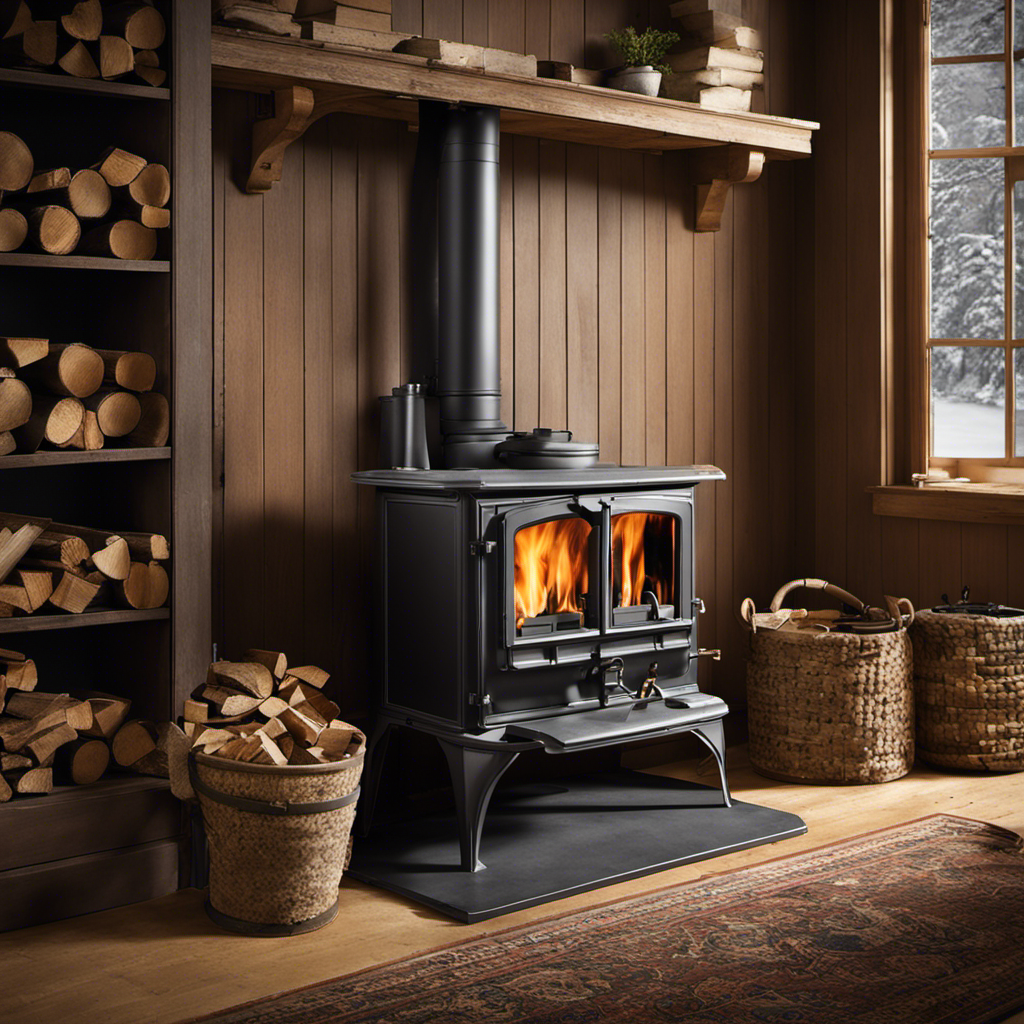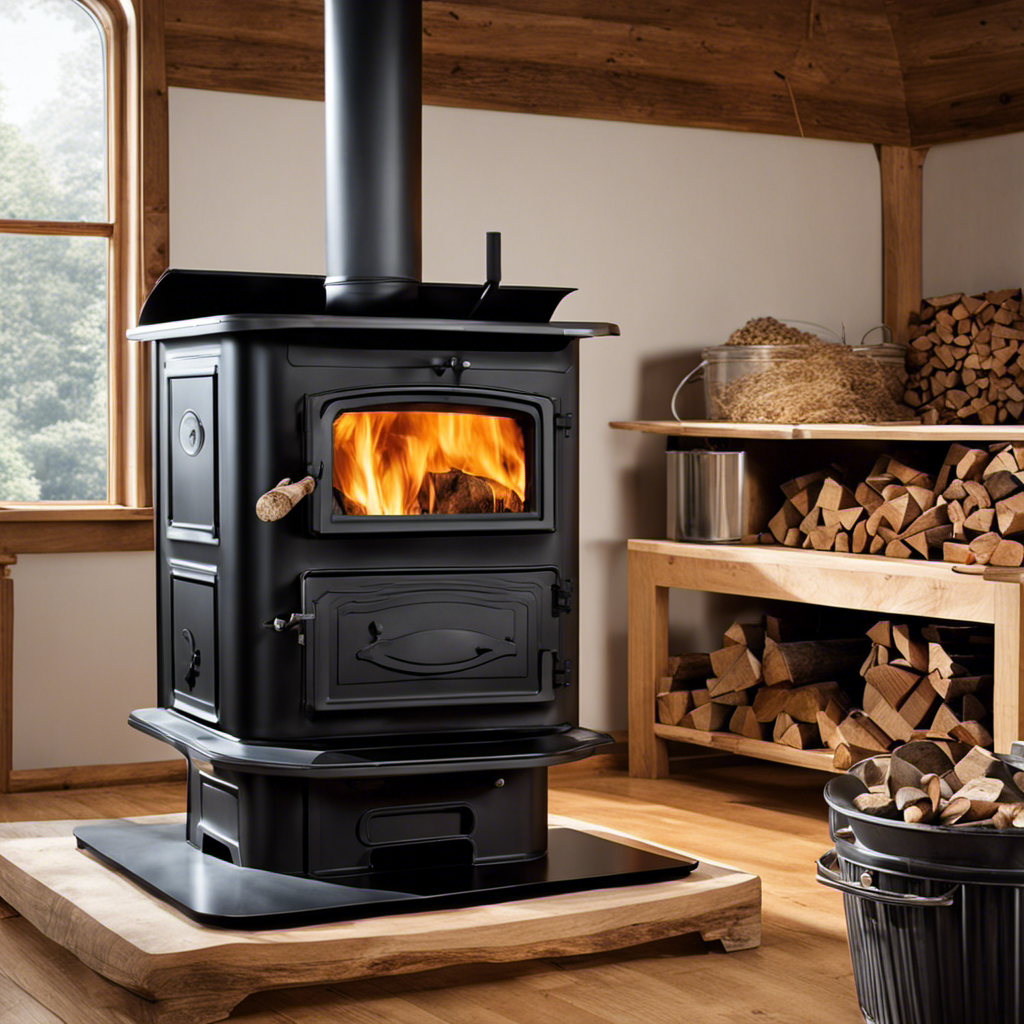Were you aware that a damaged or faulty seal on a wood stove door can lead to heat loss and decrease your stove’s efficiency by as much as 20%?
In this guide, I’ll show you how to replace a wood stove door gasket step by step. With just a few tools and materials, you can ensure a tight seal, prevent air leakage, and maximize the heating potential of your wood stove.
Let’s get started!
Key Takeaways
- Regularly assessing the condition of the door gasket is crucial for efficient functioning of a wood stove.
- The proper removal of the old door gasket is important to avoid damage and ensure an effective replacement.
- Choosing the right type of gasket and adhesive, and having the necessary tools and materials, is essential for a smooth replacement process.
- Testing and maintaining the door gasket regularly is important to ensure a tight seal and optimal performance.
Assessing the Condition of the Door Gasket
I need to check the condition of my wood stove’s door gasket to see if it needs replacing.

Regular maintenance of the door gasket is crucial to ensure the efficient functioning of the wood stove. Over time, door gaskets can become worn out and lose their effectiveness, leading to heat loss and reduced energy efficiency.
There are several common signs that indicate a worn-out door gasket. One of the most noticeable signs is air leakage around the stove door when it’s closed. This can result in a smoky or dusty environment, as well as difficulty in controlling the fire.
Another sign is a decrease in the stove’s heating capacity, as the compromised gasket fails to seal the door tightly.
Gathering the Necessary Tools and Materials
After assessing the condition of the door gasket, I realized that I need to gather the necessary tools and materials to replace it. Choosing the right type of gasket is crucial to ensure a proper seal and efficient operation of the wood stove. Here are the three items you’ll need:
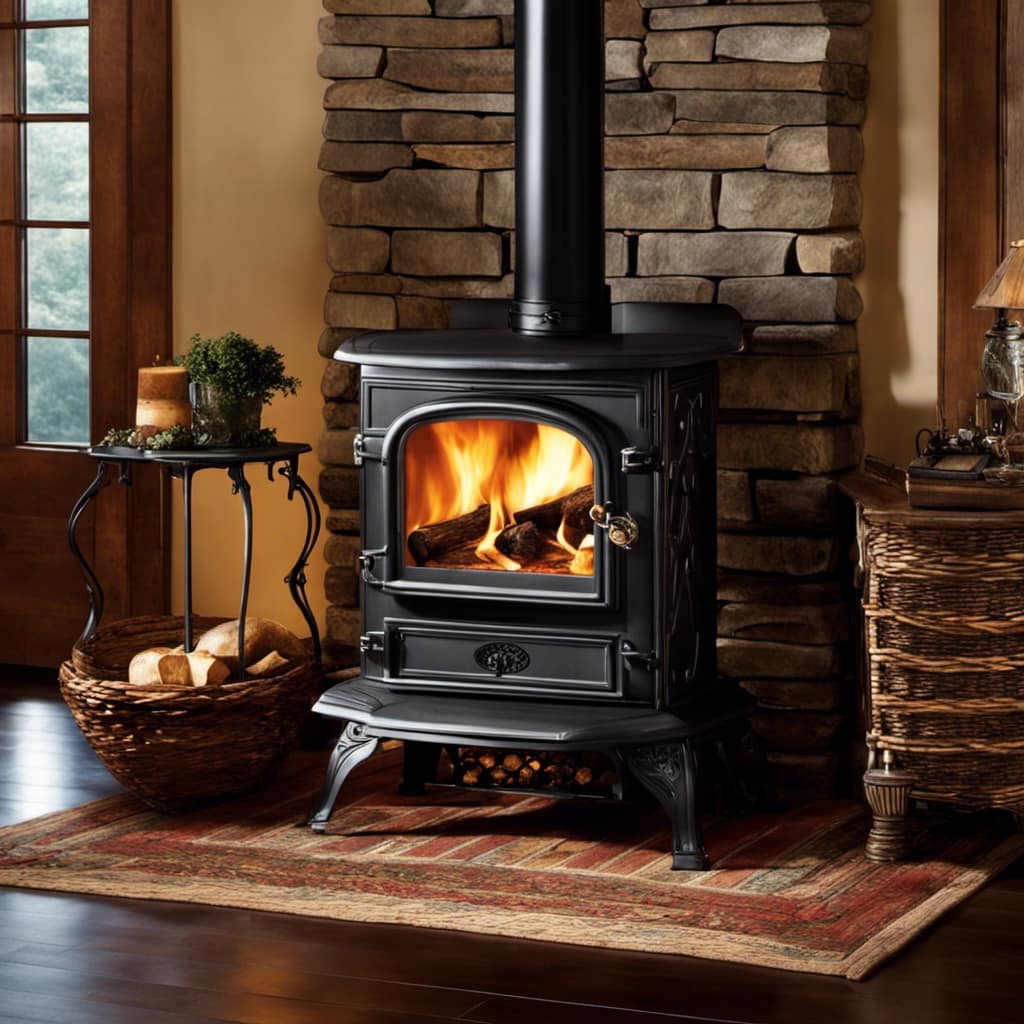
Gasket Material: Select a high-quality gasket material, such as fiberglass rope or silicone gasket, that’s suitable for high temperatures and can withstand the constant opening and closing of the stove door.
Adhesive: Use a specialized high-temperature adhesive that’s designed to bond the gasket material securely to the door.
Tools: Gather a few basic tools, including a screwdriver, pliers, and a utility knife, to remove the old gasket and install the new one.
With these tools and materials at hand, you’ll be ready to proceed with the next step of removing the old door gasket and preparing for the installation of the new one.

Removing the Old Door Gasket
Using a screwdriver and pliers, I carefully remove the old door gasket to make way for the new one. When removing the old door gasket, it is essential to avoid common mistakes that can cause damage to the stove or result in improper sealing. One common mistake is using excessive force, which can lead to bending or breaking the stove’s door frame. Another mistake is not properly preparing the stove surface before removing the gasket, as this can make it difficult to remove the adhesive residue left behind. To ensure proper disposal of the old door gasket, it is recommended to check local regulations for waste management and follow any specific guidelines provided. By taking these precautions and following the correct removal process, you can replace the wood stove door gasket efficiently and effectively.
| Mistakes to Avoid when Removing Old Door Gasket | ||
|---|---|---|
| Using excessive force | Not properly preparing the stove surface | Failing to use protective gloves |
| Bending or breaking stove’s door frame | Difficulty removing adhesive residue | Improper disposal of old gasket |
| Damaging stove’s surface | Incomplete removal of old gasket |
Installing the New Door Gasket
First, carefully measure the length of the new door gasket to ensure it’s the correct size for installation. This step is crucial to ensure a proper fit and prevent any air leaks.
Here are three important things to consider when measuring the door gasket length:
Use a measuring tape: Measure the length of the stove door opening from one end to the other. Make sure to measure the width as well, as some gaskets may require trimming to fit properly.
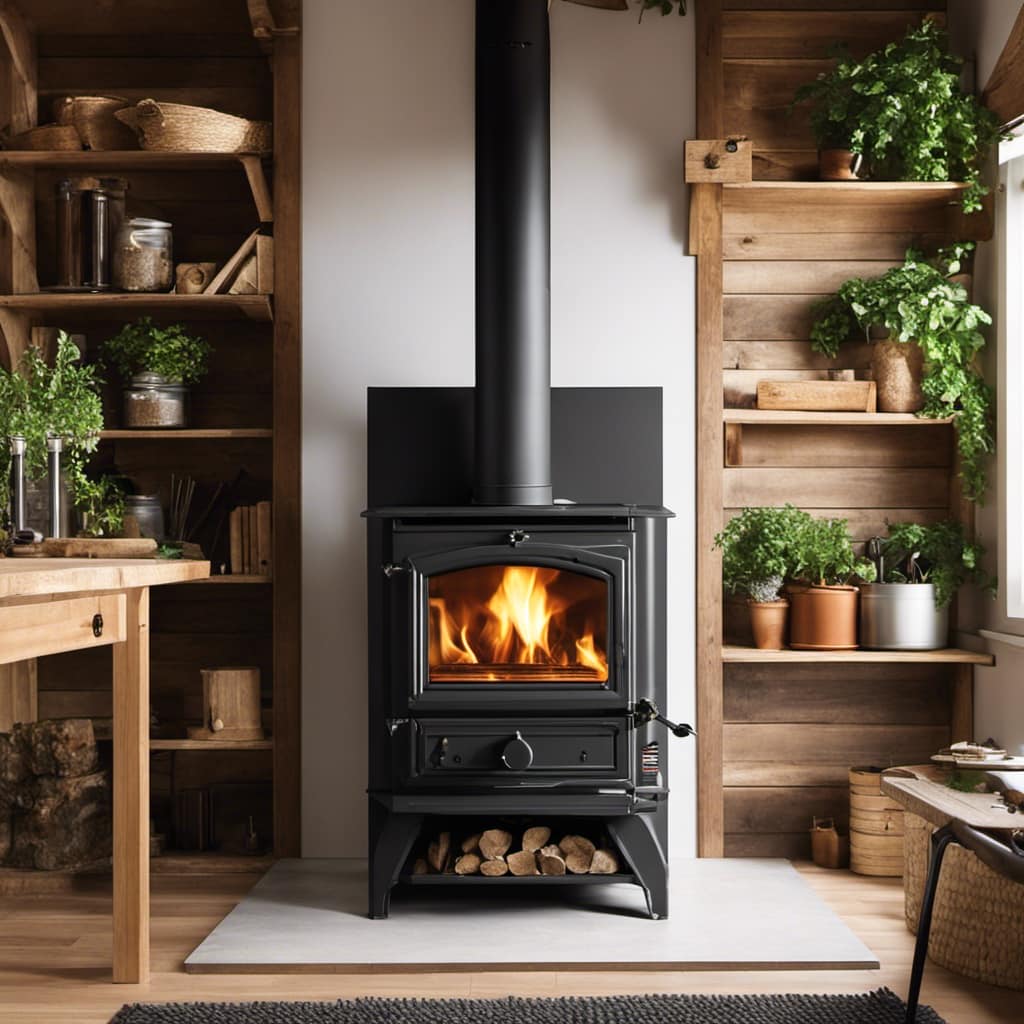
Account for overlap: When measuring the gasket length, allow for a slight overlap at the ends. This will ensure a tight seal when the door is closed.
Consider the adhesive: Before installing the gasket, make sure to apply adhesive properly. Follow the manufacturer’s instructions and apply an even layer of adhesive to the stove door. This will help the gasket adhere securely and provide a reliable seal.
Testing and Maintaining the Door Gasket
I can ensure a tight seal by regularly testing and maintaining the door gasket with proper cleaning and lubrication. Testing techniques and troubleshooting tips are essential for keeping the gasket in optimal condition. By following these steps, I can identify any issues and address them promptly.
| Testing Techniques | Troubleshooting Tips |
|---|---|
| Visual Inspection | Look for any signs of wear or damage on the gasket. Replace if necessary. |
| Smoke Test | Close the door and light a small piece of paper near the gasket. If smoke escapes, the seal is not tight. |
| Dollar Bill Test | Insert a dollar bill between the door and the gasket. Close the door and try to pull out the bill. If it slides out easily, the gasket needs adjustment. |
| Lubrication | Apply a silicone-based lubricant to the gasket to keep it pliable and prevent cracking. |
Can Adjusting the Side Door on a Wood Stove Affect the Door Gasket Replacement Process?
When replacing the door gasket on a hearthstone wood stove, it’s crucial to consider the impact of adjusting the side door. Any changes to the alignment of the adjusting hearthstone wood stove side door can affect the replacement process and potentially compromise the effectiveness of the new gasket.
Frequently Asked Questions
How Often Should the Wood Stove Door Gasket Be Replaced?
I replace my wood stove door gasket every 1-2 years to maintain proper sealing. To measure for a new gasket, I follow specific instructions. There are various materials available, each with pros and cons.

Can I Use Any Type of Adhesive to Secure the New Door Gasket?
I can use different types of adhesive to secure the new door gasket. There are pros and cons to each option. It’s important to choose the right adhesive for a secure and long-lasting seal.
Is It Necessary to Remove the Wood Stove Door in Order to Replace the Gasket?
Yes, it is necessary to remove the wood stove door in order to replace the gasket. This ensures proper installation and a secure seal. Trying to replace the gasket without removing the door may lead to inaccuracies and inefficiencies.
Can I Reuse the Old Door Gasket if It Is Still in Good Condition?
I can reuse the old door gasket if it is still in good condition. However, there are alternative gasket materials available that may provide better performance and durability for replacing the wood stove door gasket.
Is It Possible to Replace the Wood Stove Door Gasket Without Any Prior Experience or Professional Help?
Replacing the wood stove door gasket without prior experience or professional help is possible. Here’s a step-by-step guide for beginners, along with common mistakes to avoid. It’s important to follow the instructions carefully to ensure proper installation.
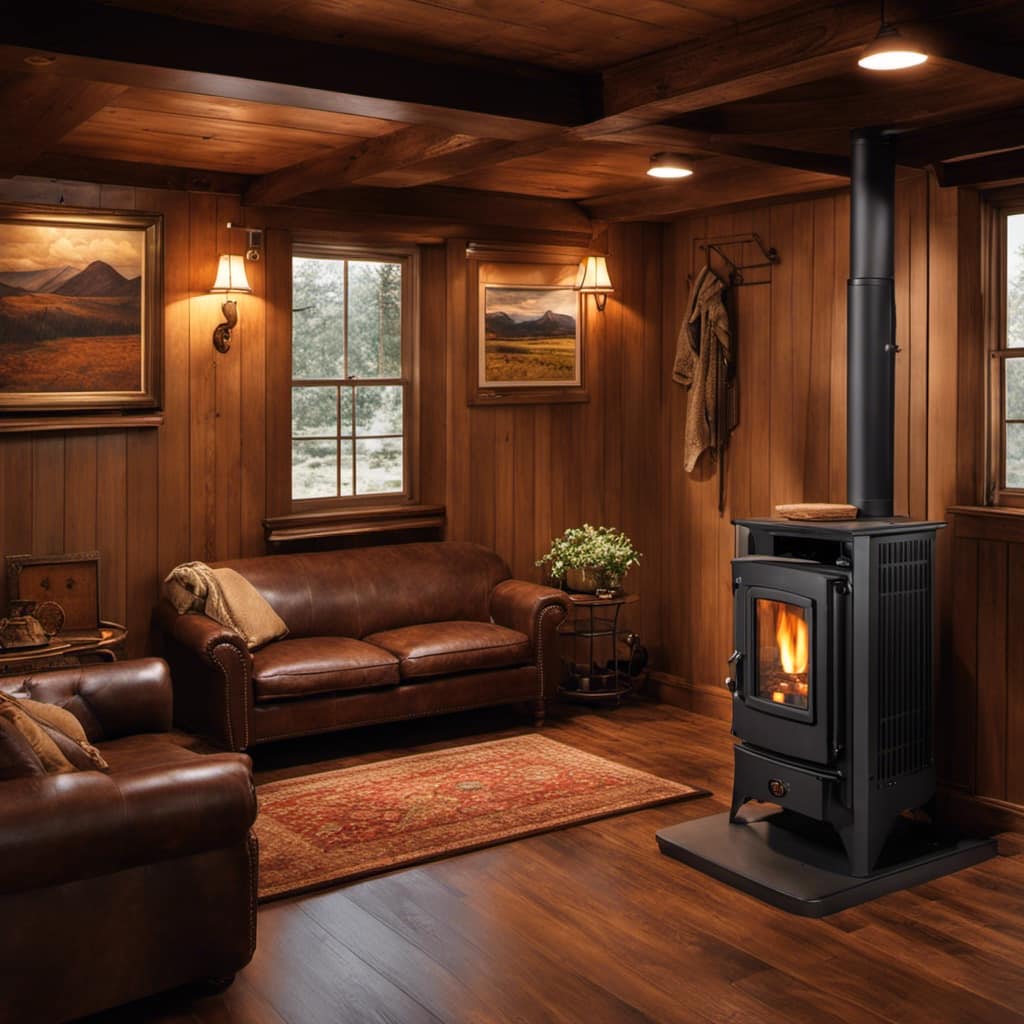
Conclusion
In conclusion, replacing a wood stove door gasket is a simple and necessary task for maintaining the efficiency of your stove.
By assessing the condition of the gasket, gathering the necessary tools and materials, removing the old gasket, and installing the new one, you can ensure that your stove operates at its best.
Remember to test and maintain the door gasket regularly to prolong its lifespan and continue enjoying the warmth and comfort of your wood stove.



